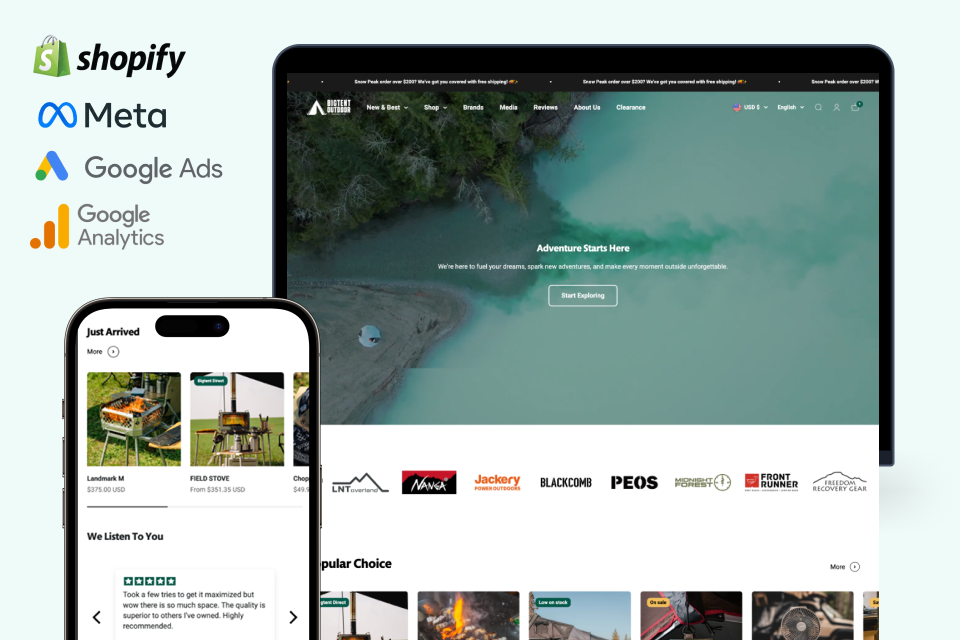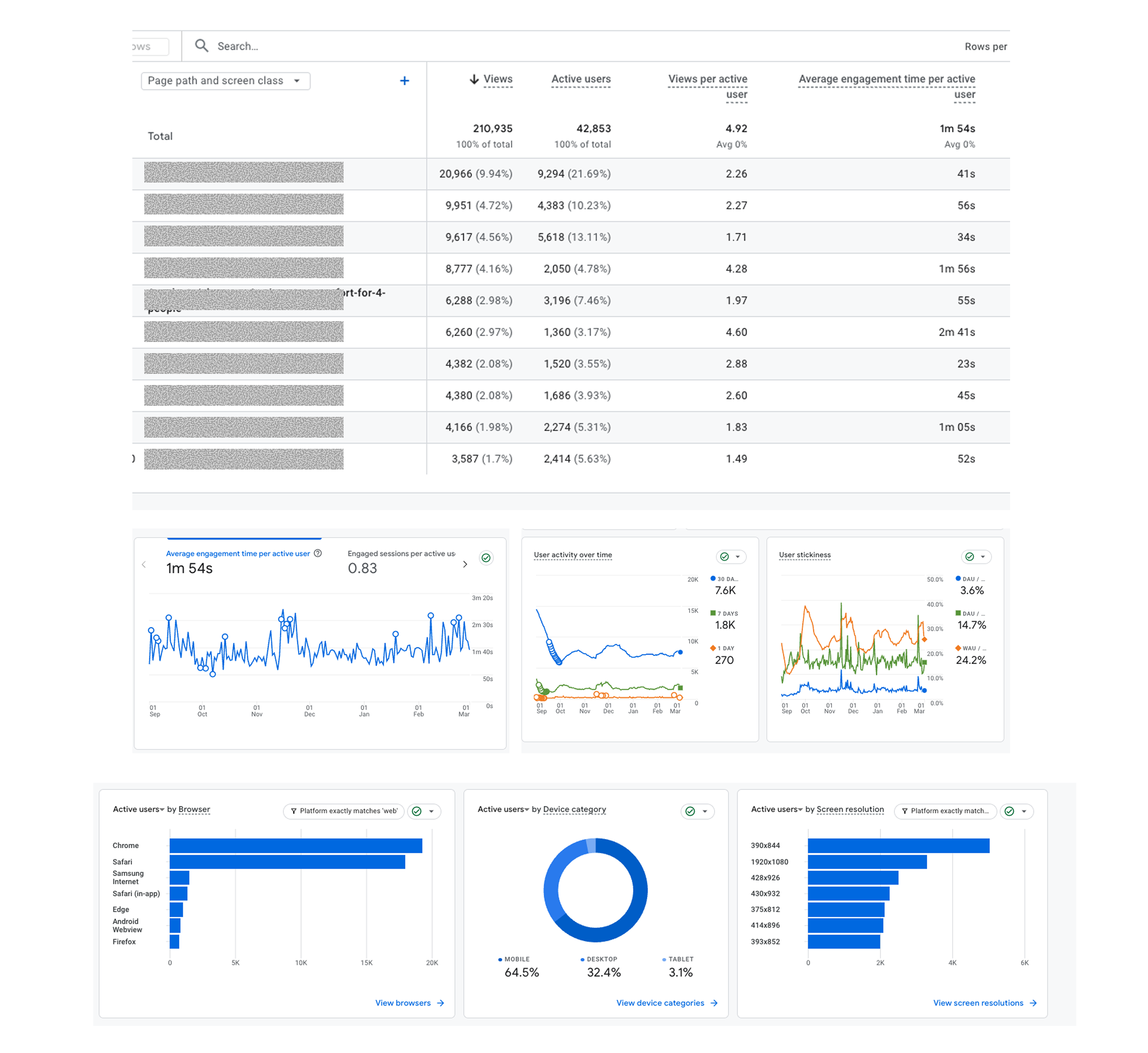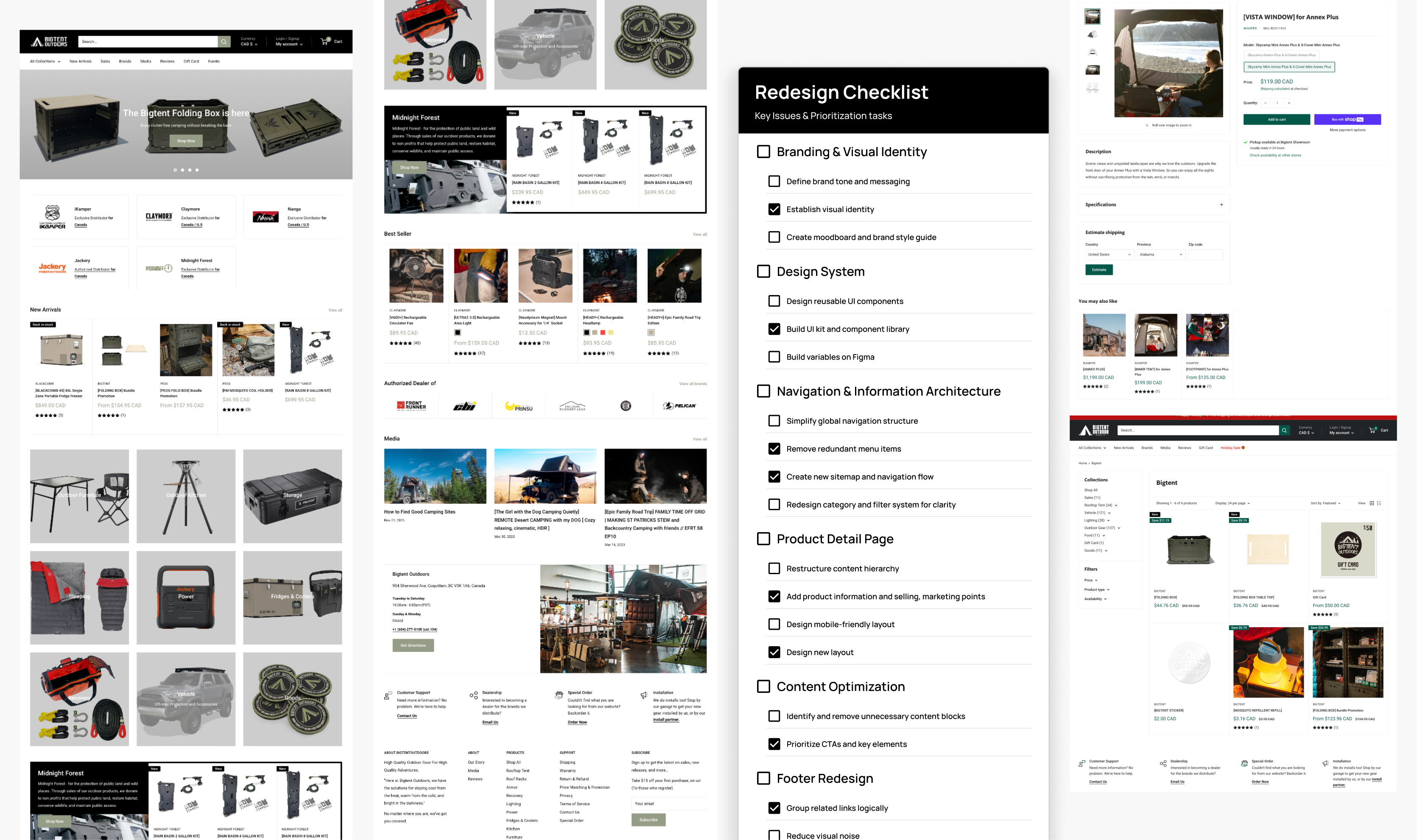
Bigtent Outdoors is a North American e-commerce company that imports sporting and camping products from around the world and exports them to B2B clients across North America, while also operating a B2C online store.
Over the past two years, I led the design and development of B2B and B2C e-commerce platforms across North America and global markets. Using tools like Google Analytics and performance ad platforms, I identified user behavior patterns and applied those insights to actionable business strategies. I also collaborated directly with global partners to understand brand positioning and market demands, allowing me to shape effective and localized sales approaches.
A Product Designer
• Redesigned Shopify-based web and mobile platform
• Leveraged Google Analytics to drive business strategies based on user behavior insights
• Separated B2B and B2C sites, and launched localized websites for a global branch
• Built scalable design systems and documentation for international teams
• Conducted quarterly user surveys and usability tests for continuous UX improvements
• Led strategic brand promotion and advertising through Google Ads and Meta Ads
• Managed social media content to strengthen brand trust and improve customer accessibility
• Improved online and offline sales by 27% whitin one year
• Increased conversion rate by 29%
• Supported a 229% increase in partnerships (from 12 to 40+)
• Boosted social media engagement by 400%
• Expanded business by separating B2B and B2C platforms
• Launched localized websites to support international branch growth
We identified key issues through data analysis using Shopify and Google Analytics, as well as a survey of 97 existing customers.
* This survey was conducted using Google Forms in 2024 and involved 97 customers.
Despite the majority of users browsing on mobile, the platform was primarily designed for the web screen.

Approximately 85% of users were men in their 30s to 50s, indicating a relatively limited target demographic.

Over 90% of respondents preferred to receive information via email. However, there was a lack of active email marketing.

We leverage GA4 to conduct a comprehensive analysis of user behavior across our platform, focusing on metrics such as page-level conversion rates, average time on page, engaged sessions, browser-specific activity, and device-level user patterns. By correlating these metrics, we can pinpoint friction points in the user journey.



* For confidentiality reasons, only a portion of the analyzed data can be shared publicly. However, essential user experience insights are gathered and interpreted using similar methods.
✦ Problem 1: High mobile traffic, but a desktop-oriented design led to increased drop-off rates.
✓Redesigned with a responsive interface, simplifying navigation and optimizing layouts for all devices.
✦ Problem 2: Limited target audience and significant bounce rate differences across pages.
✓ Expanded brand appeal to all age groups, built a cohesive design system, and optimized underperforming pages
✦ Problem 3: Lack of workflow design and active email or social media marketing strategies.
✓ Build Email Flows and Templates, Supported marketing campaigns with Social Network Service

· Optimized ad landing pages → increased conversion rate
· Boosted ROAS (Return on Ad Spend)
· Reduced bounce rate from paid traffic
· Instagram follower growth: 1,000→9,000 +
· Instagram engagement rate increased by +700%, Facebook increased by +423%
· Increased CTR, decreased CPC across campaigns
· Significant uplift in website purchases from ads
· Demonstrated cross-functional skills in design + marketing analytics


· Built responsive email templates to support cross-device marketing campaigns
· Designed end-to-end email flows to guide users from discovery to purchase
· Re-engaged existing customers with tailored recommendations and product updates
· Helped increase engagement and conversion through structured, strategic email communication.


* Data from Shopify
In e-commerce, every decision, from design to product selection to marketing, directly shapes the bottom line. Working on this project taught me that good design is about more than aesthetics. It’s about creating experiences that translate into real results for both the business and its customers.
Throughout the process, I relied on data from customer interviews, surveys, and usability testing to ground my design decisions in real-world insights. Even the negative feedback became a source of growth, challenging our team to rethink assumptions and build better solutions.
Seeing how user feedback turned into measurable impact was one of the most motivating parts of this project. It’s also a reminder of the power of listening of putting users first, and designing with empathy. I’m proud to have contributed to the platform’s growth over the past two years and even prouder to have done it with a team that values every voice and shares a vision for meaningful progress.